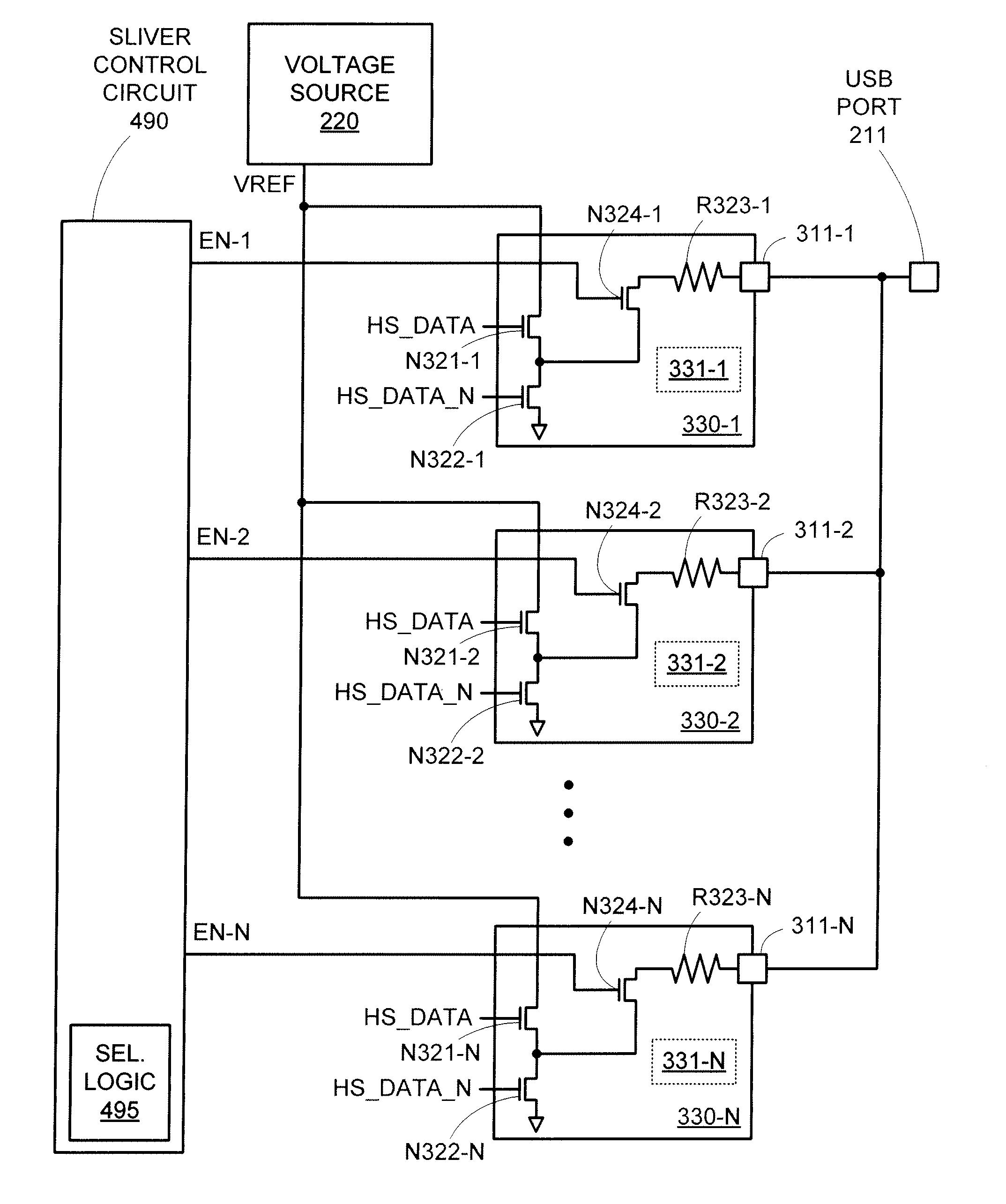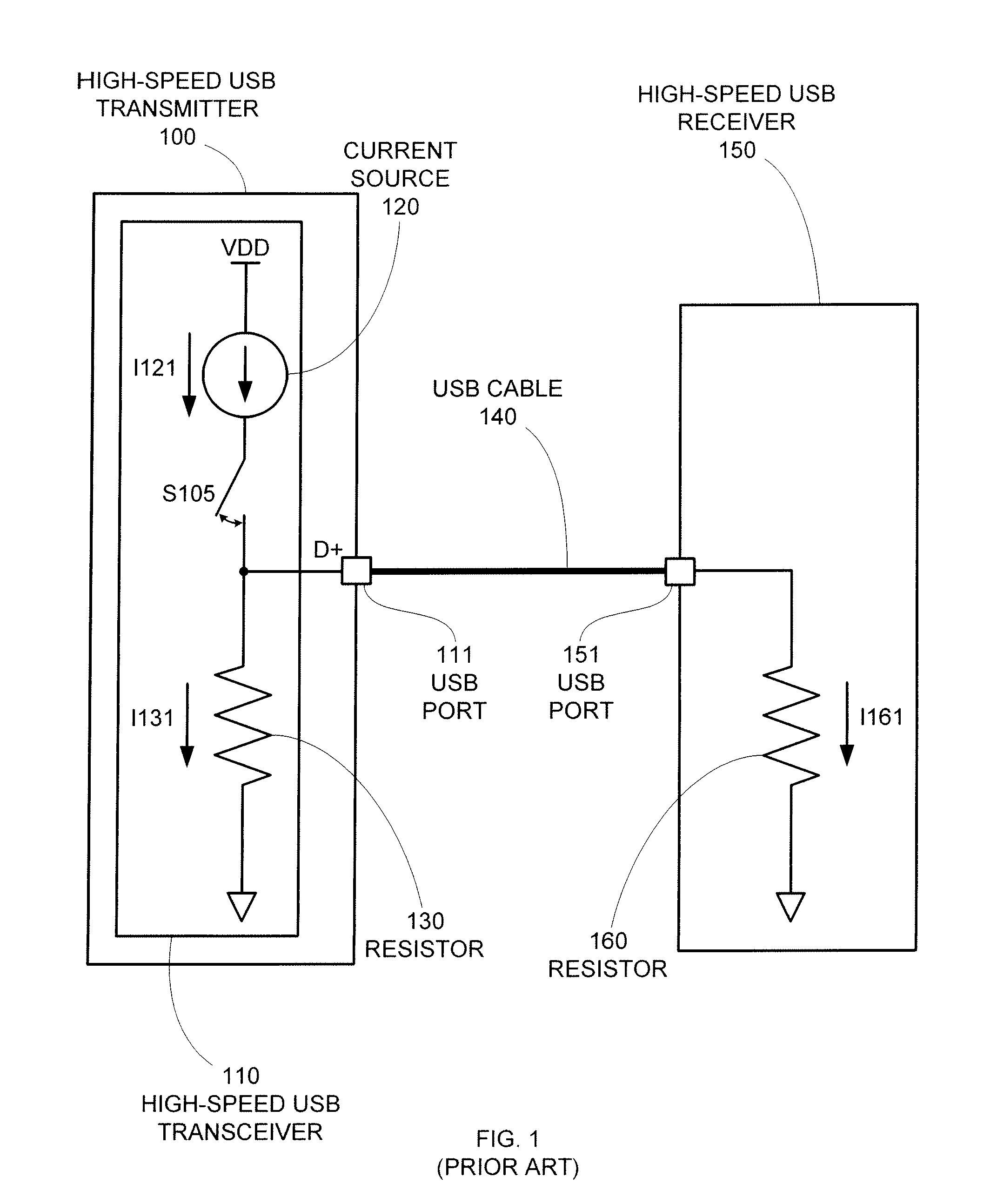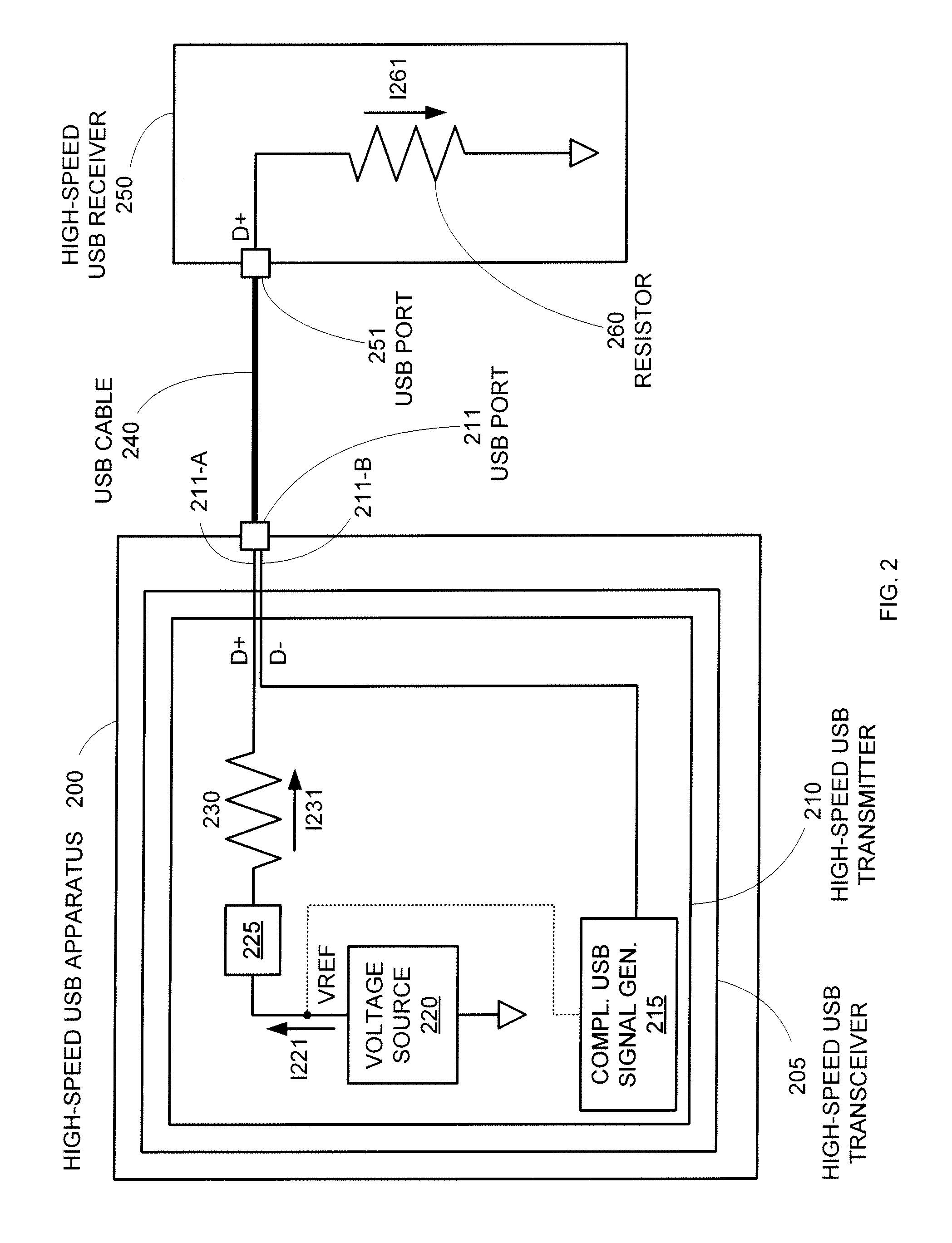USB 2.0 HS Voltage-Mode Transmitter With Tuned Termination Resistance
a voltage-mode usb transmitter and termination resistance technology, applied in the field of computer electronics, can solve the problems of less than ideal power efficiency in the current-mode architecture of the conventional usb 2.0 transceiver, and achieve the effect of reducing power consumption and reducing current requirements for the voltage-mode usb transmitter
- Summary
- Abstract
- Description
- Claims
- Application Information
AI Technical Summary
Benefits of technology
Problems solved by technology
Method used
Image
Examples
Embodiment Construction
[0020]To reduce power consumption in a high-speed USB transceiver, the conventional current-mode architecture can be replaced with a voltage-mode architecture. The voltage-mode architecture drives the USB signal using a voltage source, thereby eliminating the need for a voltage setting resistor coupled to ground in the USB transceiver. As a result, the additional current path to ground provided by the voltage-setting resistor is eliminated, and current requirements for the voltage-mode USB transmitter can be effectively halved over the current requirements for a current-mode USB transmitter.
[0021]FIG. 2 shows an embodiment of a high-speed USB apparatus 200 (e.g., a computer, computer peripheral, digital cameral, PDA, or digital music player) based on a voltage-mode architecture. A USB port 211 on USB apparatus 200 is connected to a USB port 251 on a high-speed USB receiver 250 by a USB cable 240. As described above with respect to FIG. 1, high-speed USB receiver 250 (in a downstream...
PUM
 Login to View More
Login to View More Abstract
Description
Claims
Application Information
 Login to View More
Login to View More - R&D
- Intellectual Property
- Life Sciences
- Materials
- Tech Scout
- Unparalleled Data Quality
- Higher Quality Content
- 60% Fewer Hallucinations
Browse by: Latest US Patents, China's latest patents, Technical Efficacy Thesaurus, Application Domain, Technology Topic, Popular Technical Reports.
© 2025 PatSnap. All rights reserved.Legal|Privacy policy|Modern Slavery Act Transparency Statement|Sitemap|About US| Contact US: help@patsnap.com



